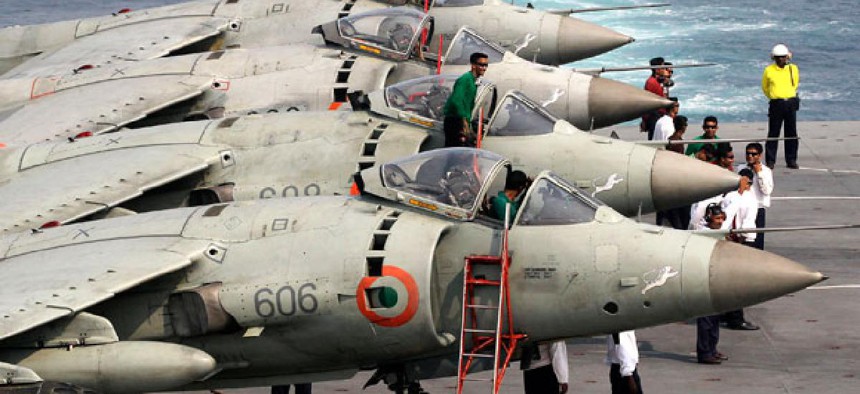
Indian Navy's Supersonic Sea Harriers fighter aircrafts are prepared for a display during an exercise on board Indian Navy vessel INS Virat in the Arabian Sea. Rajanish Kakade/AP File Photo
New Global Navy Challenges U.S. Dominance on the Seas
The BRIC nations—Brazil, Russia, India and China—are increasing their naval presence.
Offshore from Syria, Russia’s navy is conducting probably its largest naval deployment outside its own waters since the Soviet breakup. The Chinese navy is in another potential confrontation today with Japan in the East China Sea, and raising questions about where it is headed next.
But the BRIC nations as a whole—a force in the global economic conversation since the acronym was coined by Goldman Sachs to refer to the high-growth economies of Brazil, Russia, India and China—are becoming an increasing naval presence on the high seas. One reason is simple nature—when nations become wealthier, they tend to build up their fighting capabilities. But another is natural resources—all four nations either want to buy or sell oil and natural gas, and they are venturing further and further to do so.
A paradox is that while the shift challenges US primacy on the high seas, the US itself—because of its oil and gas boom—is driving part of the BRIC naval expansion.
Because it is providing for more and more of its own energy requirements, the US is importing much less African and Middle East crude, and the chief new buyers replacing it are BRIC nations—the US is about to be displaced by India as the largest buyer of Nigerian crude oil, for example. “It is only a matter of time before we see Indian ships in the South Atlantic [to patrol the coast of West Africa],” Brahma Chellaney, of the Center for Policy Research in New Delhi, told the Financial Times.







